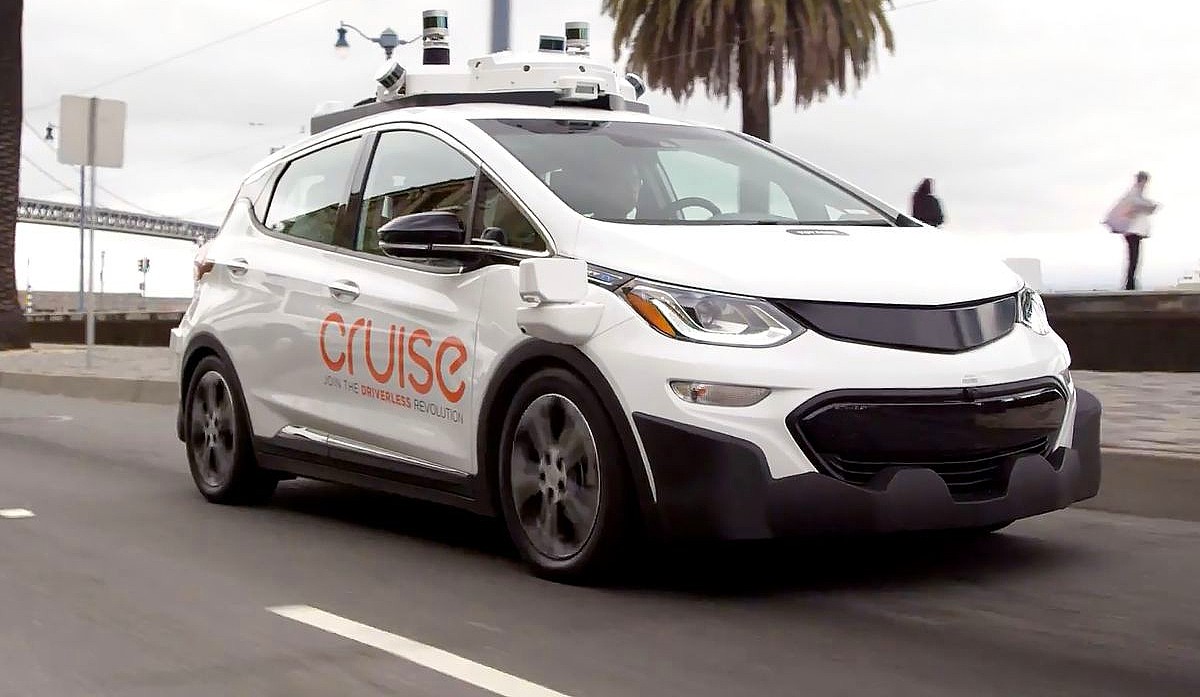
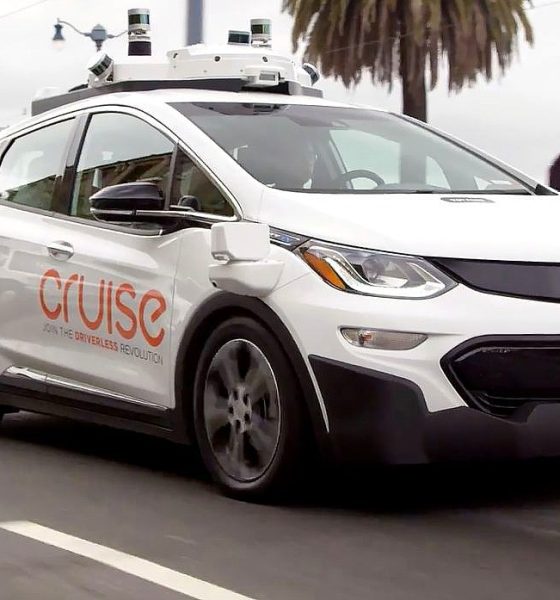
News
GM’s Cruise secures first-ever permit to charge for self-driving car rides in California
General Motors’ Cruise became the first autonomous driving program to secure a permit to charge people to ride in a self-driving car after numerous objections from city officials in San Francisco.
Cruise won the approval with a unanimous 4-0 vote by the California Public Utilities Commission late last evening, a report from Reuters stated.
San Francisco is a hotbed for self-driving test vehicle programs, but Cruise became the first to secure the permit. Cruise will launch paid services within the next few weeks, it said. Its fleet will be comprised of 30 driverless Chevrolet Bolt vehicles.
Cruise autonomous vehicles utilize 40+ sensors to provide the cars with a 360-degree view. It can also map the location of surrounding objects within centimeters, the company’s website states.
PUC Commissioner Clifford Rechtschaffen said during the meeting to approve GM’s Cruise for driverless operation that the panel was being cautious by “taking a careful, incremental approach” to regulating fully autonomous vehicles. “This resolution marks another important step in that effort,” Rechtschaffen said. “It will allow our staff to continue to gather very important data that will support the development of future phases.”
Initially, cars in the fleet will be limited to a 30 MPH top speed, restricted to an area that avoids downtown, and will only be allowed to operate between the hours of 10 PM and 6 AM. The vehicles will not be operational during heavy fog, precipitation, or smoke and will not be allowed on highways at any point. The restrictions came as a result of concerns from San Francisco fire, police, and transit officials, who wanted regulators to impose restrictions on the capabilities of the program before allowing it to carry paying passengers. The fire, police, and transit officials are hoping to require further approval to expand the fleet.
Concerns from San Francisco FD members were valid and related to an April incident where a Cruise autonomous test vehicle blocked a firetruck that was en route to a three-alarm fire. Another incident where a Police Officer pulled over a Cruise vehicle, which appeared to then drive off before the cop was finished with the traffic stop, also raised concerns. Cruiser said the cars made safe decisions.
The autonomous ride-hailing service market is expected to grow in value from $48,922.78 million in 2021 to $98,745.11 million in 2028, a report from ResearchandMarkets.com said. It is estimated to grow at a compound annual growth rate of 10.6 percent from 2021 to 2028. “The global ride-hailing service market is segmented on the basis of service type, vehicle type, location, end-user, and geography,” the report states. On the basis of service type, the market is segmented into e-hailing, car sharing, car rental, and station-based mobility. The rising proliferation of smartphones and internet connectivity is driving the demand for e-hailing services across the globe.”
I’d love to hear from you! If you have any comments, concerns, or questions, please email me at joey@teslarati.com. You can also reach me on Twitter @KlenderJoey, or if you have news tips, you can email us at tips@teslarati.com.

News
Tesla Diner to transition to full-service restaurant as Chef heads for new venture
“I am leaving the Tesla Diner project to focus on the opening of Mish, my long-desired Jewish deli. Projects like Mish and the Tesla Diner require a sharpness of focus and attention, and my focus and attention is now squarely on Mish.”
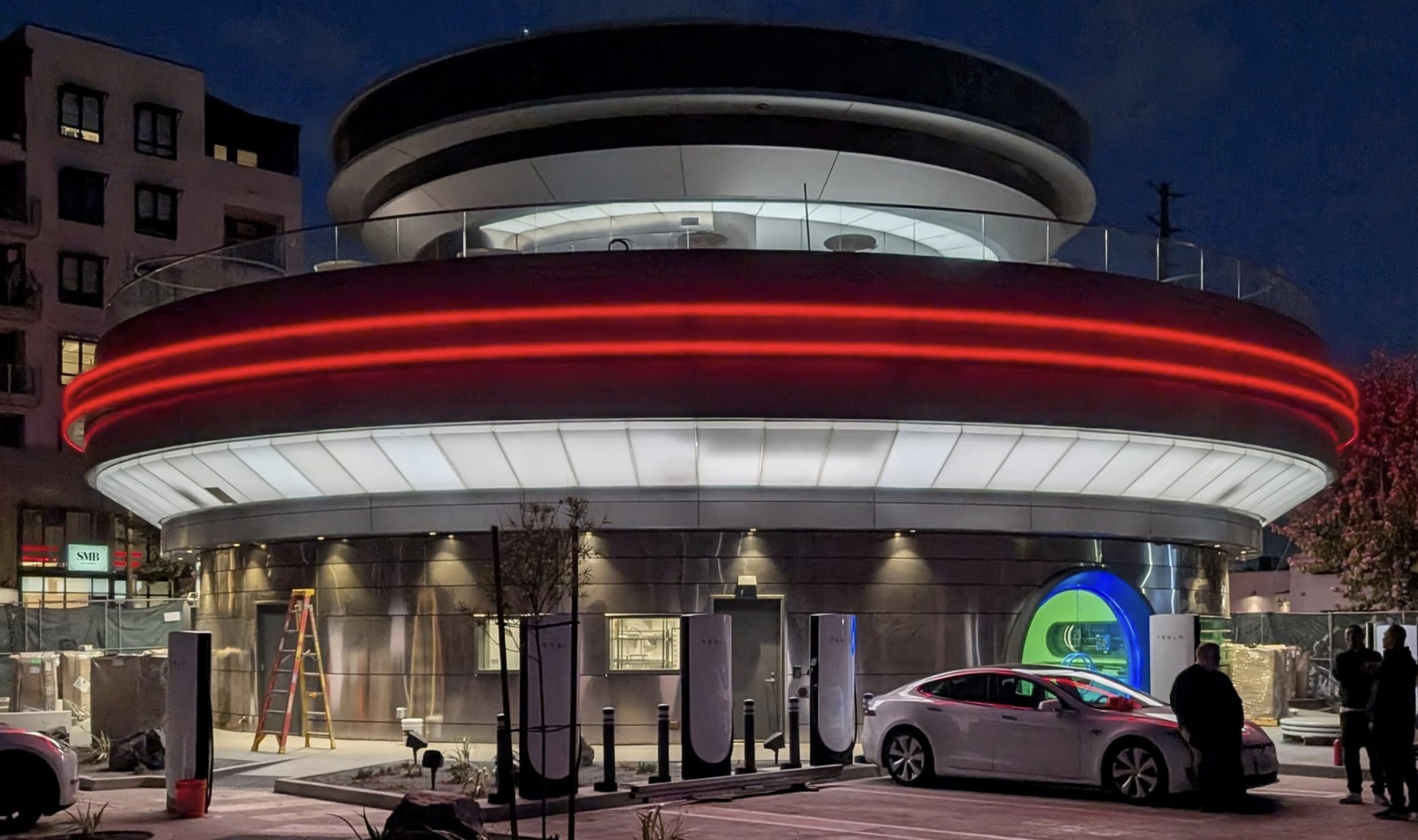
Tesla Diner, the all-in-one Supercharging and dining experience located in Los Angeles, will transition to a full-service restaurant in January, staff said, as Chef Eric Greenspan said he would take on a new project.
A report from the Los Angeles Times says Greenspan confirmed through a text that he would leave the Diner and focus on the opening of his new Jewish deli, Mish.
Greenspan confirmed to the paper:
“I am leaving the Tesla Diner project to focus on the opening of Mish, my long-desired Jewish deli. Projects like Mish and the Tesla Diner require a sharpness of focus and attention, and my focus and attention is now squarely on Mish.”
Greenspan took on the job at the Tesla Diner and curated the menu back in March, focusing on locally-sourced ingredients and items that would play on various company products, like Cybertruck-shaped boxes that hold burgers.
Tesla Cybertruck leftovers are the main course at the Supercharger Diner
The Tesla Diner has operated as somewhat of a self-serve establishment, where Tesla owners can order directly from their vehicles through the center touchscreen. It was not exclusive to Tesla owners. Guests could also enter and order at a counter, and pick up their food, before sitting at a booth or table.
However, the report indicates Tesla is planning to push it toward a sit-down restaurant, full of waiters, waitresses, and servers, all of which will come to a table after you are seated, take your order, and serve your food.
It will be more of a full-featured restaurant experience moving forward, which is an interesting move from the company, but it also sounds as if it could be testing for an expansion.
We know that Tesla is already considering expanding locations, as it will be heading to new areas of the country. CEO Elon Musk has said that Tesla will be considering locations in Palo Alto near the company’s Engineering HQ, and in Austin, where its HQ and Gigafactory Texas are located.
Musk said that the Diner has been very successful in its first few months of operation.
News
Tesla adds new surprising fee to Robotaxi program
“Additional cleaning was required for the vehicle after your trip. A fee has been added to your final cost to cover this service. Please contact us if you have any questions.”
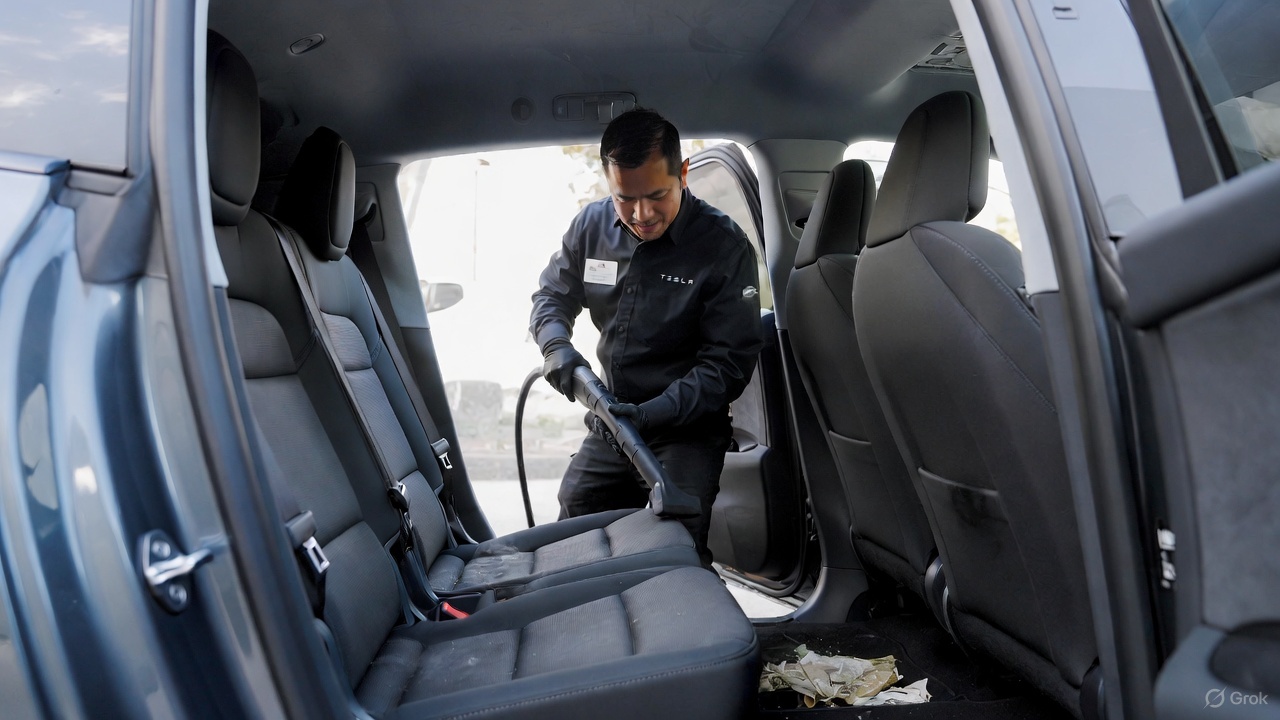
Tesla has added a new and somewhat surprising fee to the Robotaxi program. It’s only surprising because it was never there before.
Tesla shocked everyone when it launched its Robotaxi platform and offered riders the opportunity to tip, only to tell them they do not accept tips. It was one of the company’s attempts at being humorous as it rolled out its driverless platform to people in Austin.
As it has expanded to new cities and been opened to more people, as it was yesterday to iOS users, Tesla has had to tweak some of the minor details of the Robotaxi and ride-hailing platforms it operates.
First Look at Tesla’s Robotaxi App: features, design, and more
With more riders, more vehicles, and more operational jurisdictions, the company has to adjust as things become busier.
Now, it is adjusting the platform by adding “Cleaning Fees” to the Robotaxi platform, but it seems it is only charged if the vehicle requires some additional attention after your ride.
The app will communicate with the rider with the following message (via Not a Tesla App):
“Additional cleaning was required for the vehicle after your trip. A fee has been added to your final cost to cover this service. Please contact us if you have any questions.”
The cost of the cleaning will likely depend on how severe the mess is. If you spill a soda, it will likely cost less than if you lose your lunch in the back of the car because you had a few too many drinks.
This is an expected change, and it seems to be one that is needed, especially considering Tesla is operating a small-scale ride-hailing service at the current time. As it expands to more states and cities and eventually is available everywhere, there will be more situations that will arise.
The messes in vehicles are not a new situation, especially in a rideshare setting. It will be interesting to see if Tesla will enable other fees, like ones for riders who request a ride and do not show up for it.
News
Tesla Model Y sold out in China for 2025
Customers who wish to get their cars by the end of the year would likely need to get an inventory unit.
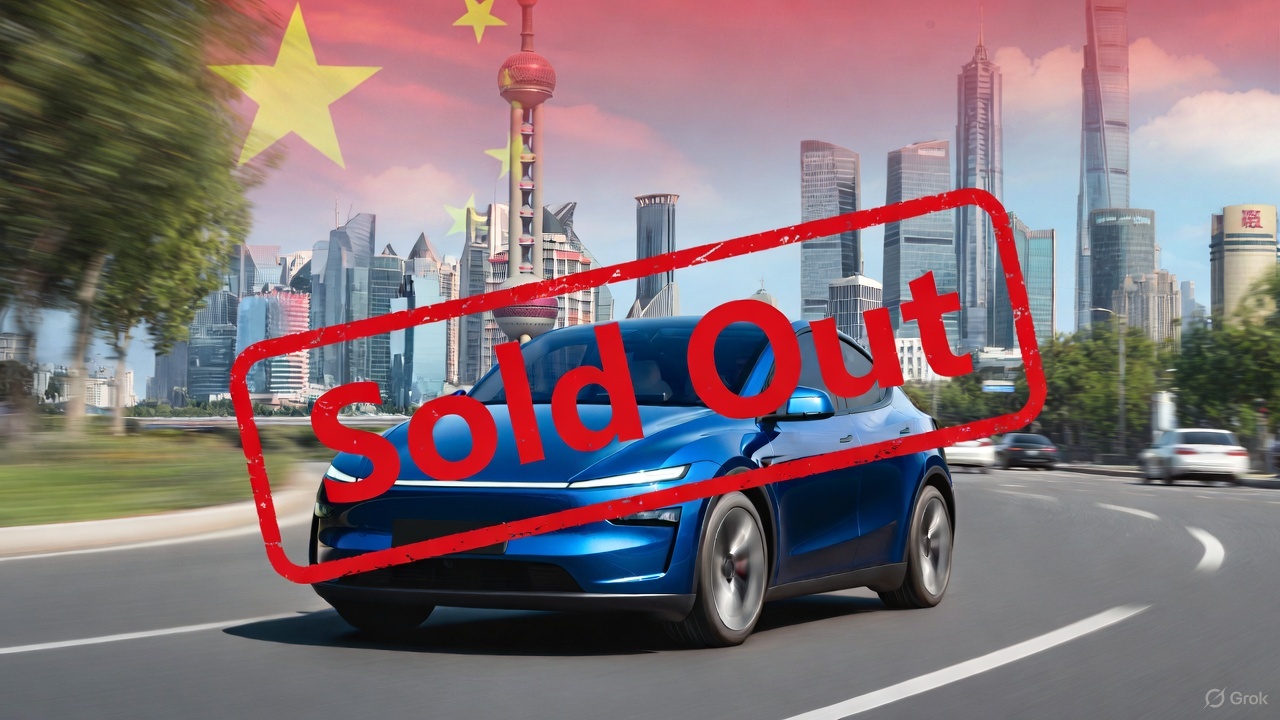
It appears that the Model Y has been sold out for 2025 in China. This seems to be true for the four variants of the vehicle that are currently offered in the country.
Tesla China’s order page update
A look at Tesla China’s order page for the Model Y shows a message informing customers that those who wish to guarantee delivery by the end of the year should purchase an inventory unit. This was despite the Model Y RWD and Model Y L showing an estimated delivery timeline of 4-8 weeks, and the Model Y Long Range RWD and Model Y Long Range AWD showing 4-13 weeks.
As per industry watchers, these updates on the Model Y’s order page suggest that Tesla China’s sales capacity for the remainder of 2025 has been sold out. The fact that estimated delivery timeframes for the Model Y Long Range RWD and AWD extend up to 13 weeks also bodes well for demand for the vehicle, especially given strong rivals like the Xiaomi YU7, which undercuts the Model Y in price.
Tesla China’s upcoming big updates
What is quite interesting is that Tesla China is still competing in the country with one hand partly tied behind its back. So far, Tesla has only been able to secure partial approval for its flagship self-driving software, FSD, in China. This has resulted in V14 not being rolled out to the country yet. Despite this, Tesla China’s “Autopilot automatic assisted driving on urban roads,” as the system is called locally, has earned positive reviews from users.
As per Elon Musk during the 2025 Annual Shareholder Meeting, however, Tesla is expecting to secure full approval for FSD in China in early 2026. “We have partial approval in China, and we hopefully will have full approval in China around February or March or so. That’s what they’ve told us,” Musk said.








